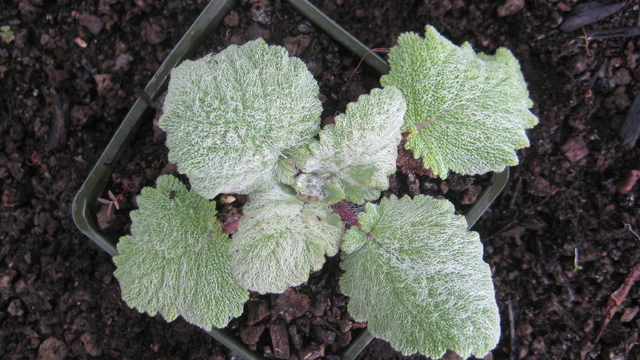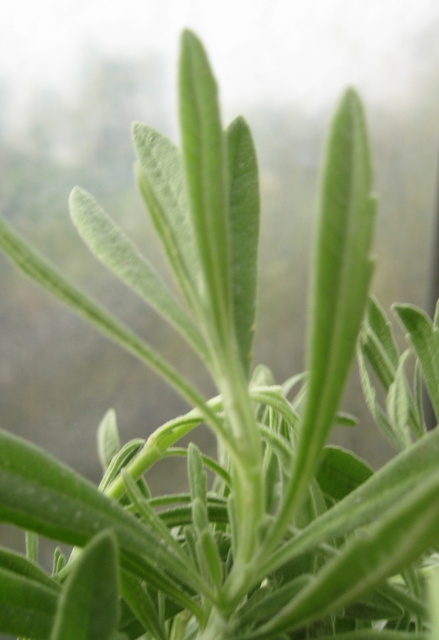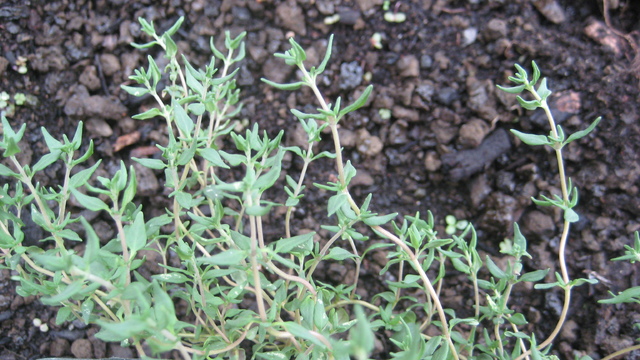Sage and thyme: Drought-tolerant mint family members
Many of the herbs we commonly grow in our gardens are in the Lamiaceae, or mint family. Though most of the family members have aromatic leaves, the scents and flavors vary widely. The different fragrances are caused by the volatile oils found in the foliage, flowers and stems of these plants. Most of these species have culinary, as well as medicinal uses, and can many make lovely ornamental additions to a garden.
Two of special interest as we experience another very dry month in Kona are those drought-tolerant members of the Thymus and Salvia genera. Each of these plants has attractive features that warrant your consideration for inclusion in your landscape.
Though common or garden thyme, sometimes known as English thyme (Thymus vulgar or vulgaris), is readily available, some species and special cultivars are harder to find. The common thyme has the flavor most often called for in recipes. Other cultivars include summer thyme, winter or German thyme and French thyme, which have very similar growth habits and only slightly different aromas. Lemon thyme (T. pulegioides or T. citriodorus) is one of several thyme varieties with citrus scents. These will add slightly different flavors to your recipes and can be used when a citrus overtone is called for in a soup, sauce or stew.
German, or winter thyme, has good cold tolerance and grows well in colder temperate climates. It usually grows to less than 10 inches and produces pink flowers. Summer thyme is another culinary thyme with less cold tolerance. It is very similar in aroma and taste to common thyme but has lavender flowers. This specimen makes a nice garden addition as a border plant or as part of a rock garden. Both these thymes are well-suited to growing in containers.
The citrus thymes have a similar growth habit to the common thymes but a completely different aroma. Lemon thyme smells and tastes just like lemons and can be used in in recipes calling for lemon juice or zest. The plants are semi-creeping with a partially upright habit. The variegated varieties with tiny lavender-pink summer flowers are an appealing addition to any garden.
Most of these thymes originated in the Mediterranean region, but all have spread to parts of the globe where there is hot sun for part of the year and mild winters. They do best in slightly alkaline soil that drains well. Common thyme usually grows as a spreading clump of stems with small green leaves that rarely grow taller than a foot high. In hot summer weather, these thymes will usually bloom.
Most drought-tolerant plants seem to have gray-green leaves and are often covered in fine hairs. Woolly thyme (T. pseudolanuginosus) is one of these. Named for its soft, felted, gray-green leaves that are covered in a down that encourages stroking, woolly thyme is a good garden addition. It does, however, lack the aroma and culinary usefulness of the other varieties. It grows well in full sun as a creeping ground cover or cascading over a wall.
Another useful thyme is (T. serpyllum). It is popular as an attractive and fast-growing ground cover rather than as a culinary herb. The plant stays very prostrate at 1 to 2 inches and its flowers that appear in summer turn the planted area into a purple-pink carpet. This variety has the added features of tolerance to light foot traffic and a woodsy aroma.
Most thymes grow well from seed or can be divided after flowering to produce new plants. Internet research by individual botanical name is the best way to find seeds of the variety you’d like.
With similar drought tolerance, several sages from the genus Salvia stand out for their medicinal, cultural and culinary uses. Garden or common sage (Salvia officinalis) is a woody plant that grows to about 2 feet tall. Its aromatic gray-green leaves impart a wild flavor to many savory dishes, including stuffing and sausages. It has strong antioxidant and antibacterial properties, which help preserve meats. A strong sage tea or a small amount of sage essential oil in water can be used as an antibacterial mouthwash or to treat a sore throat.
White sage (Salvia apiana) is another woody Salvia. It can reach 4 feet or more in height when in flower and has a different aroma from common sage. It is not a culinary herb. This sage is native to dry regions of Southern California and desirable mostly for its cultural use in smudging. Native Americans took the mature leaves and stems and wrapped them into cigar-like bundles. Once dried, these were burned as part of rituals and ceremonies for cleansing new living spaces and clearing areas or people with negative energy or illness.
Clary sage (Salvia sclarea) is a plant you can have as a pet. The downy soft leaves of the young plant are tactually attractive. The name clary may come from the mucilaginous seed’s early use to remove foreign objects from the eye. In the “Complete Herbal” published in 1653, it was called “clear-eye.”
The plant is herbaceous and can grow to 3 to 4 feet tall when flower spikes are present. The flowers are the main attraction of this sage with colorful blossoms ranging from pale mauve to lilac or white to pink. The essential oil of clary sage is extracted mostly from the flowers. It is used in perfumes, as well as added to impart a muscatel flavor to alcoholic drinks. The distilled oil is also used in aromatherapy to relieve anxiety, promote euphoria, treat PMS and cramping and help with insomnia.
These herbs qualify as xeriscape plants, which mean they are drought tolerant once established and require little care. Insect or disease attacks are rare among these aromatic plants. They will definitely do best in soil that drains well. Soggy soil will promote rotting roots and leaves, which can kill the plant. Light feedings with organic fertilizers will suffice and may encourage summer blooming.
The best way to acquire these plants is to sow seeds that match the botanical names given. All grow well from seed. Many can also be propagated asexually from cuttings or by root division. Experimentation in different seasons is advised to achieve success.
Of course, you can buy some of these plants from local nurseries. Some of the varieties mentioned are available at Sunrise Nursery in Kailua-Kona or at Tropical Edibles Nursery in Captain Cook. Kari Hagerman from Pomaikai Plant Co. also carries many of these varieties in her booth at the Waimea Homestead Farmers Market on Saturday mornings.
Diana Duff is a plant adviser, educator and consultant living on an organic farm in Captain Cook.





